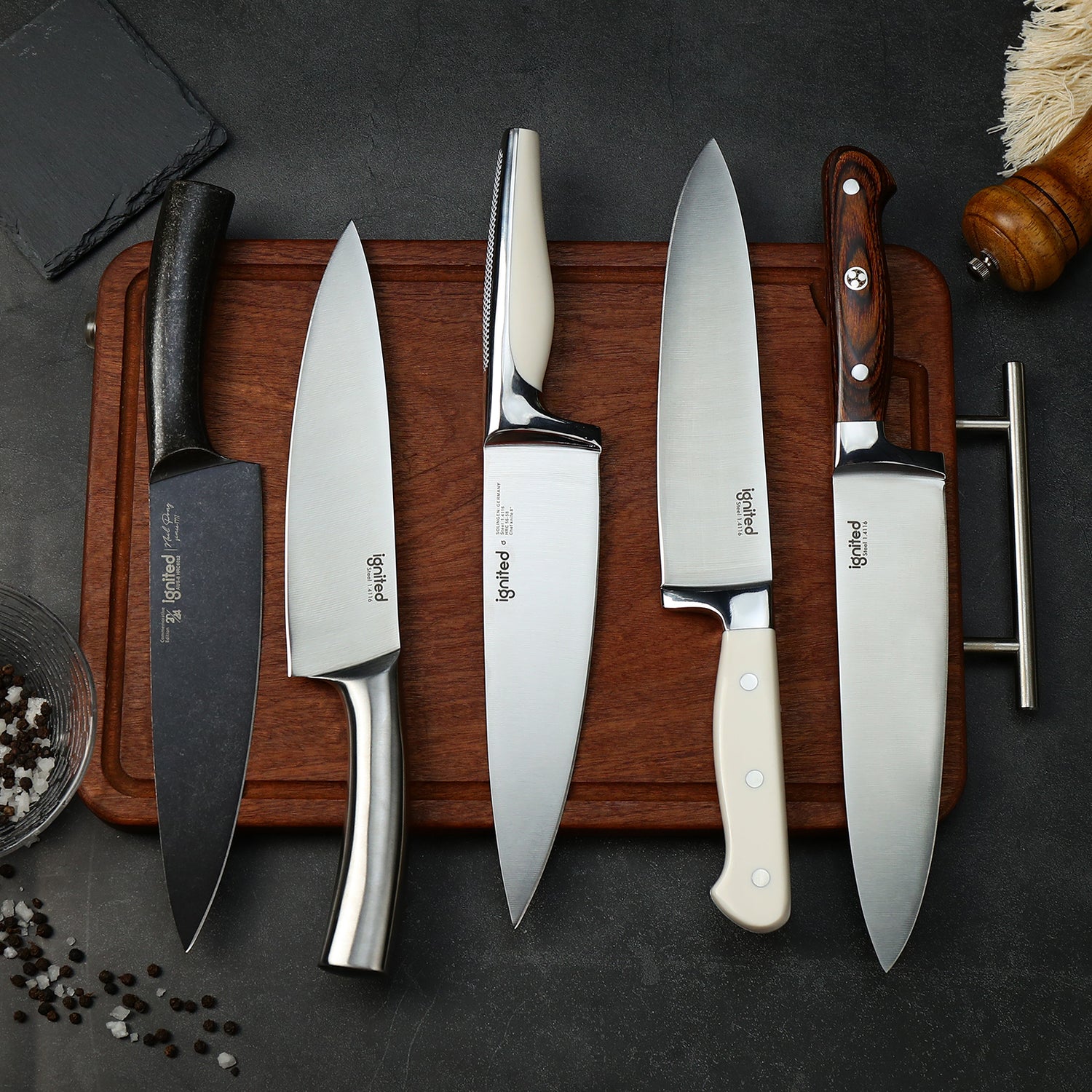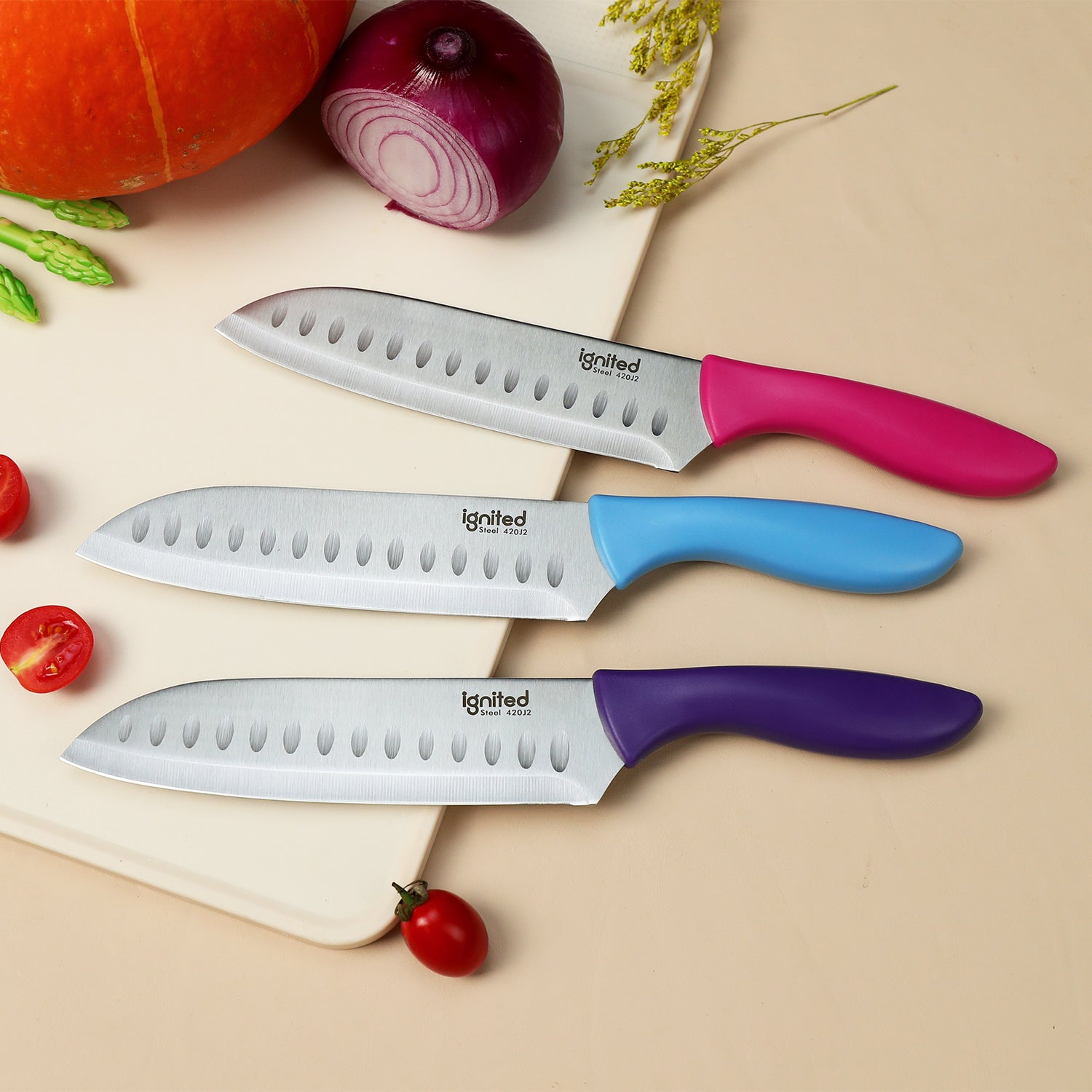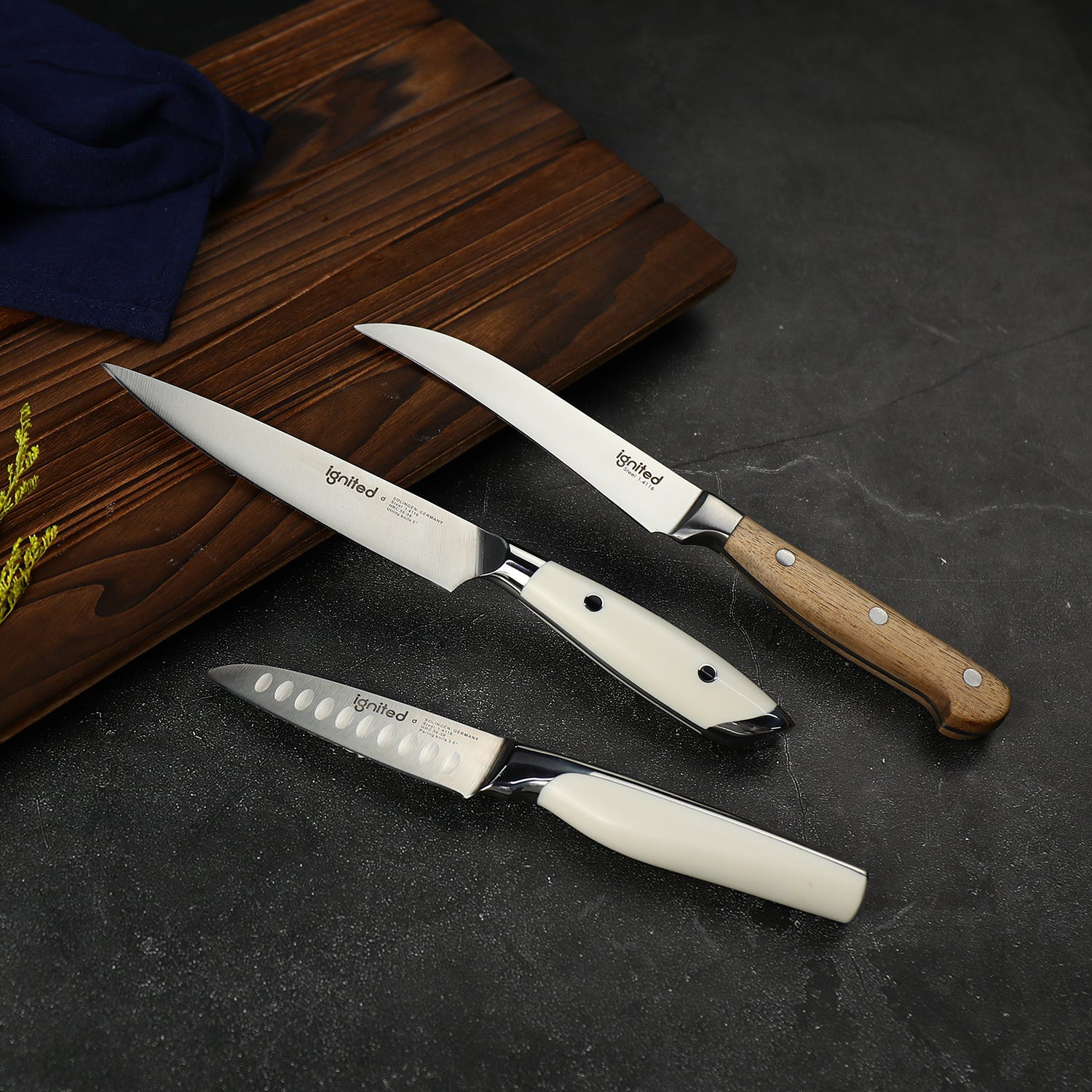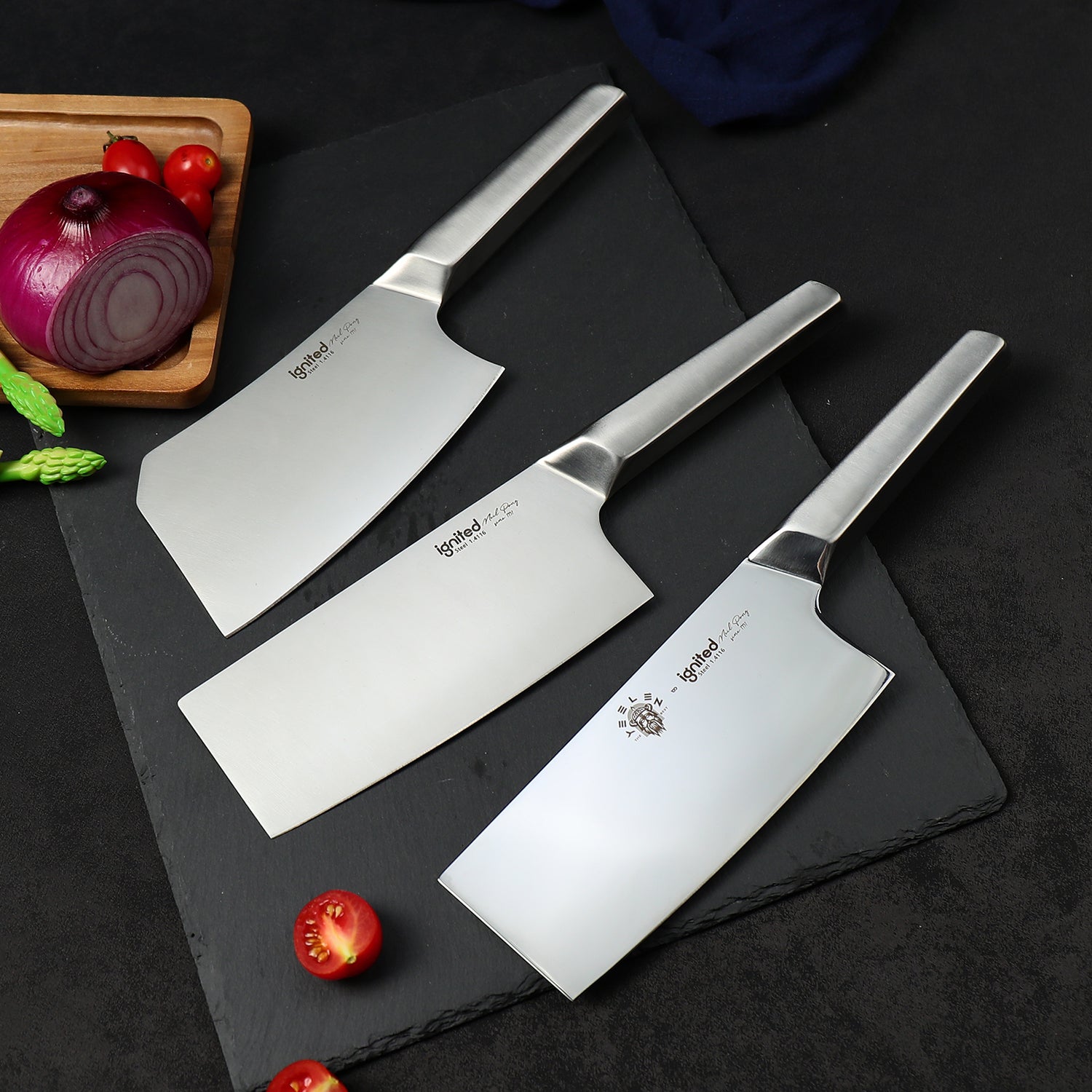Choosing the right chef’s knife can transform your cooking experience. But should you choose a Western-style knife or a Japanese-style one? While both offer excellent cutting performance, their design philosophies, materials, and usage are quite different. In this guide, we’ll break down the key differences so you can decide which style suits your kitchen best.
Table of Contents
Origins and Cultural Background
Western Knives
Western knives, especially from Germany and France, evolved with the growth of professional kitchens in Europe. They’re built for versatility and endurance, suited for tasks like cutting through thick vegetables and meat with bones.
Japanese Knives
Rooted in samurai sword-making traditions, Japanese chef knives prioritize precision and sharpness. They were developed for refined tasks like slicing fish or vegetables thinly and delicately, typical of Japanese cuisine.
Blade Design and Geometry
Western Knives
- Curved edge ideal for rocking motion
- Thicker and heavier blades
- Double-beveled for ambidextrous use
- Common blade length: 8–10 inches
Japanese Knives
- Flatter edge, suitable for slicing and push-cutting
- Thinner, lighter blades for delicate cuts
- Often single-beveled (e.g. Yanagiba)
- Popular types: Gyuto, Santoku, Nakiri
Steel Type and Hardness
Western Knives
- Softer stainless steel (52–58 HRC)
- More durable, less prone to chipping
- Requires more frequent sharpening
Japanese Knives
- Harder high-carbon or Damascus steel (58–65 HRC)
- Superior edge retention
- More brittle and prone to chipping
Handle Design
Western Knives
- Full tang with riveted handles
- Bolster for balance and safety
- Heavier ergonomic grip
Japanese Knives
- Wa-style handles (often octagonal or D-shaped)
- No bolster, maximizing blade length
- Lighter for precise handling
Usage and Cutting Techniques
Western Knives
- Ideal for chopping, mincing, dicing
- Handles tough ingredients and bones
- Rocking motion preferred
Japanese Knives
- Perfect for precision slicing and vegetables
- Not suitable for hard ingredients or bones
- Push-pull slicing technique preferred
Sharpening and Maintenance
Western Knives
- Sharpened at 20–22° angle
- Easy to sharpen with honing rods or pull-through sharpeners
- Dishwasher-safe (but hand-washing is still best)
Japanese Knives
- Sharpened at 12–15° angle
- Requires whetstones and technique
- Must be hand-washed and dried immediately
Conclusion
Western chef knives offer durability and versatility for heavy-duty tasks, making them ideal for general use and beginner cooks. Japanese knives, on the other hand, deliver precision and sharpness for delicate slicing, ideal for chefs who value technique and finesse.
The best kitchens often combine both — using Western knives for brute work and Japanese knives for finesse cuts.
Frequently Asked Questions (FAQ)
1. What’s the main difference between Western and Japanese chef knives?
Western knives are heavier and more durable; Japanese knives are sharper and more precise.
2. Which is better for beginners?
Western knives are easier to maintain and more forgiving, so they’re generally better for beginners.
3. Can Japanese knives cut through bones?
No — they are brittle and prone to chipping. Use a Western knife for that.
4. How should I care for a Japanese chef knife?
Hand wash, dry immediately, store carefully, and sharpen using whetstones.
5. What’s the difference in sharpening angles?
Western knives: 20–22° per side. Japanese knives: 12–15° for a sharper, finer edge.





